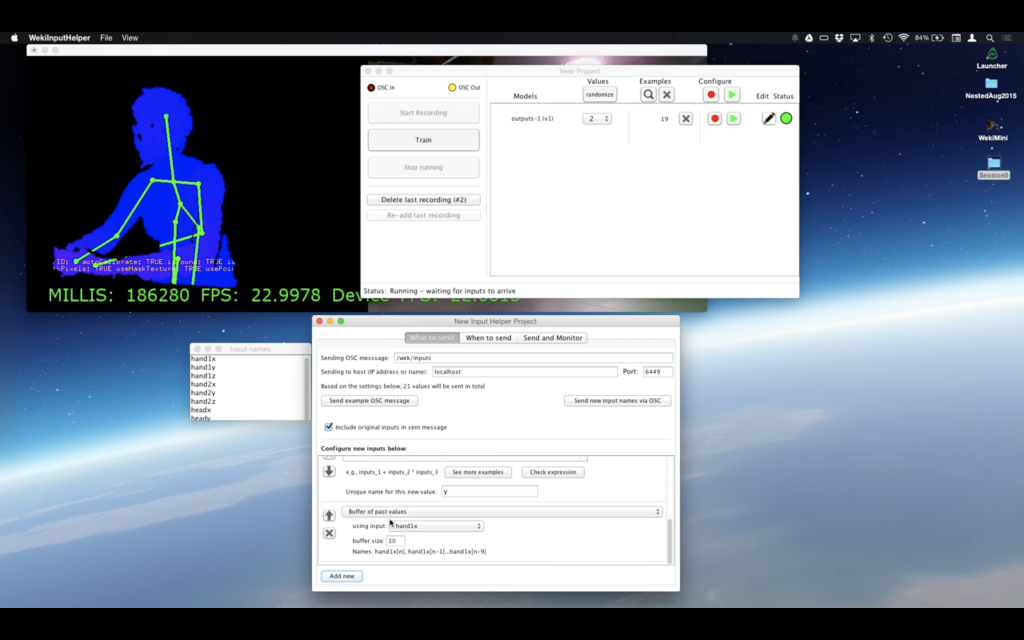
- Regression:
- Better for inputs that are changing continually through time
- Computes numerical value from inputs
- Outputs change smoothly as the inputs change
- Used to control continuous parameters like volume, position, etc…
- Most common machine learning technique in the development of new electronic instruments
- Unlike classification, regression models can output values that are not in the training set
- Values in between or outside of the values in the training set
- Good Uses in Music:
- Raise pitch as I move from position X to position Y
- Decrease amount of drums as lights become dimmer
- Match tempo of the music to tempo of my body movements
Examples of Types of Regression-
- Least Squares Linear Regression
- Linear Regression Model will find an equation to fit the set
- 1 input: y = ax+b
- 2 inputs: y=ax+bx+c
- etc…
- Programming coordinate graphs use y=0 at top of the screen and y increasing as you go down
- Slope negative/positive switch in equation (not in visuals)
- Linear Regressions Algorithm WILL produce a straight (linear) line to fit the set; do not use with quadratic/exponentials sets
- Good for controlling volume or pitch in instruments where you only want increase/decrease linearly (no curve)
- Linear Regression Model will find an equation to fit the set
- Polynomial Regression
- Need to set up to deal with the appropriate polynomial degree
- Can kinda fit a polynomial to a straight line but will be slightly curvy still
- When to use which model?
- Linear Regression Lines will do better at ignoring outliers
- Can always edit training data to improve your model